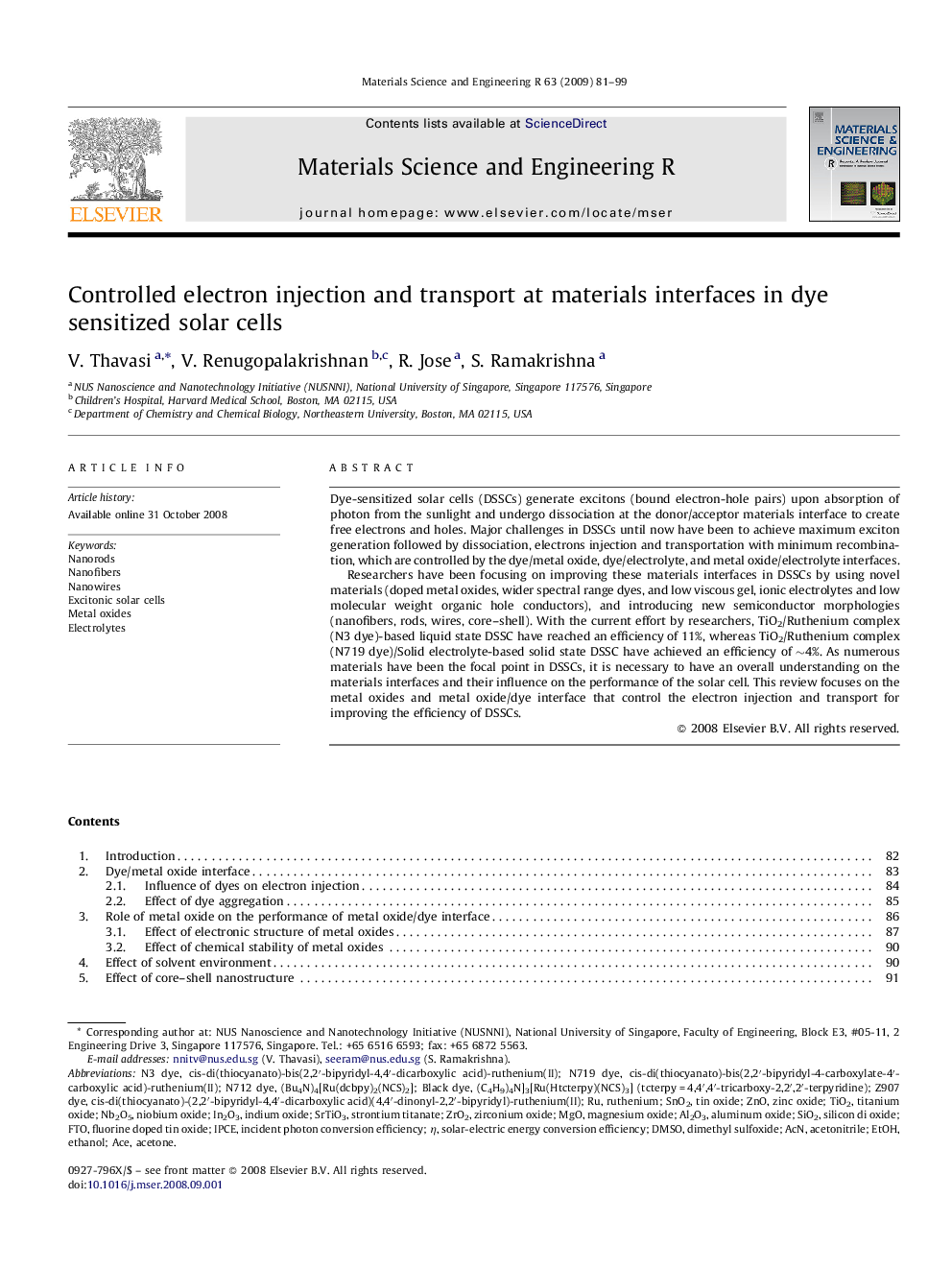| Article ID | Journal | Published Year | Pages | File Type |
|---|---|---|---|---|
| 1532648 | Materials Science and Engineering: R: Reports | 2009 | 19 Pages |
Abstract
Researchers have been focusing on improving these materials interfaces in DSSCs by using novel materials (doped metal oxides, wider spectral range dyes, and low viscous gel, ionic electrolytes and low molecular weight organic hole conductors), and introducing new semiconductor morphologies (nanofibers, rods, wires, core-shell). With the current effort by researchers, TiO2/Ruthenium complex (N3 dye)-based liquid state DSSC have reached an efficiency of 11%, whereas TiO2/Ruthenium complex (N719 dye)/Solid electrolyte-based solid state DSSC have achieved an efficiency of â¼4%. As numerous materials have been the focal point in DSSCs, it is necessary to have an overall understanding on the materials interfaces and their influence on the performance of the solar cell. This review focuses on the metal oxides and metal oxide/dye interface that control the electron injection and transport for improving the efficiency of DSSCs.
Keywords
N3 dyeSnO2NanowiresSrTiO3In2O3Nb2O5IPCEEtOHACNACEN719 dyeBlack dyeDMSOEthanolAcetoneAcetonitrileelectrolytesAluminum oxideAl2O3Titanium oxideZinc oxideZnOZirconium oxideMetal oxidesTin OxideFluorine doped tin oxideMagnesium oxideniobium oxideIndium oxideStrontium titanateTiO2FTOZrO2Dimethyl sulfoxideRutheniumExcitonic solar cellsSiO2MgONanofibersNanorods
Related Topics
Physical Sciences and Engineering
Materials Science
Electronic, Optical and Magnetic Materials
Authors
V. Thavasi, V. Renugopalakrishnan, R. Jose, S. Ramakrishna,
